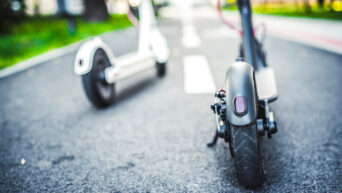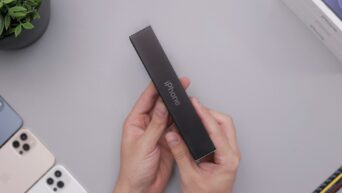
Credit: Unsplash
These sensors could allow you to feel objects grabbed in virtual reality.
Many popular fictional depictions of virtual reality have some kind of gloves or vest that can simulate physical sensations on users. If you’ve seen the movie adaptation of Ready Player One, you may recall the vest Wade Watts wears that allows him to feel Art3mis’ hands on his chest, and perhaps less helpfully, when he receives a powerful body blow. At the moment, VR hasn’t quite moved past headsets and clunky controllers, but thanks to a new advancement in sensor tech, we could be closer to reaching out and touching the virtual world.
A group of researchers from Cornell University have developed a hand-mounted sensor that utilizes flexible fiber optic links to detect physical sensations like bending, squeezing, flexing, and all that fun stuff you can do with your hands. Each finger is mounted with an LED light guide that allows motion capture technology to recognize and reproduce its movement. When you flex your finger, small deposits of special dyes change color to show that they’re being exposed to pressure. Obviously, this process is a little more roundabout and rudimentary compared to the actual human sensation of touch, but it’s at least simple enough for a computer to parse, which is an impressive first step.
Cornell researchers have created a fiber-optic sensor that combines low-cost LEDs and dyes, resulting in a stretchable “skin” that detects deformations such as pressure, bending and strain. https://t.co/rM2b6EaA0L
— Cornell University (@Cornell) November 13, 2020
“Right now, sensing is done mostly by vision,” said head researcher Rob Shepherd. “We hardly ever measure touch in real life. This skin is a way to allow ourselves and machines to measure tactile interactions in a way that we now currently use the cameras in our phones. It’s using vision to measure touch. This is the most convenient and practical way to do it in a scalable way.”
As I mentioned before, the first and most obvious application of this technology is the creation of VR-compatible gloves that would give you clear feedback when you touch, pick up, or move something in a simulated space. In addition to that, though, the mounts could also be used to create synthetic hands for robots that would give them a closer approximation to a real sense of touch. This would allow robots to perform more delicate operations that require a little extra finesse. However they apply it, it’s one more step toward the ultimate goal of digitizing and replicating the human senses.
































